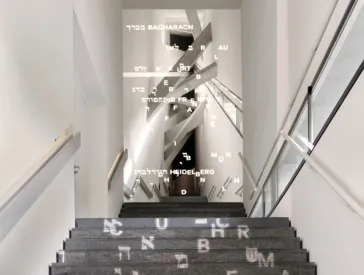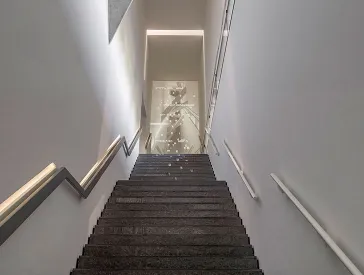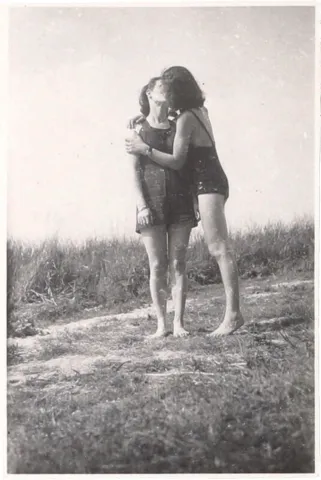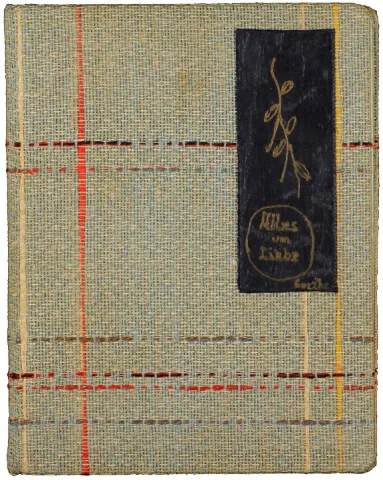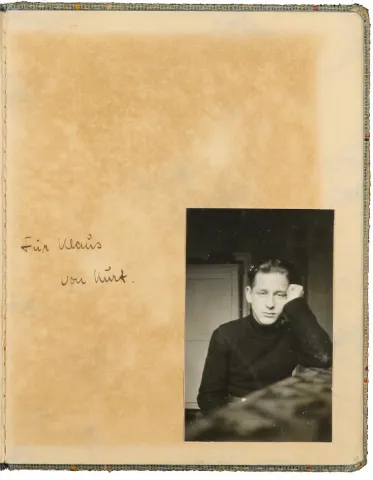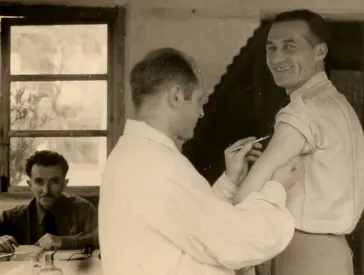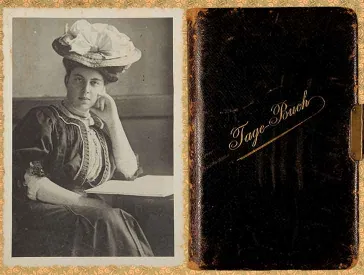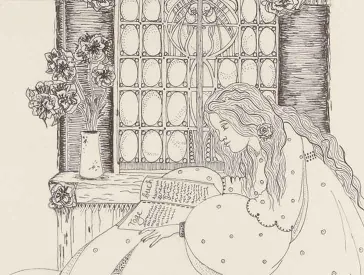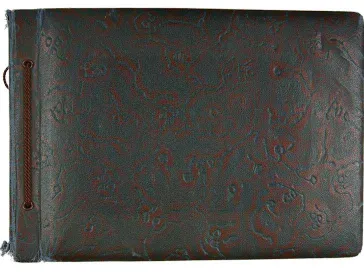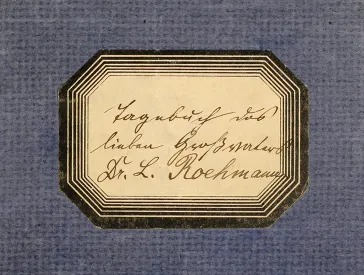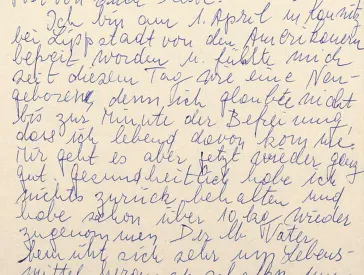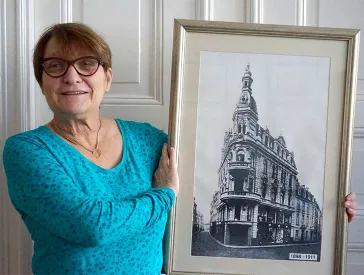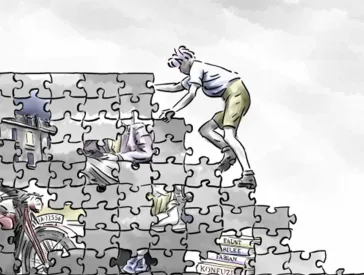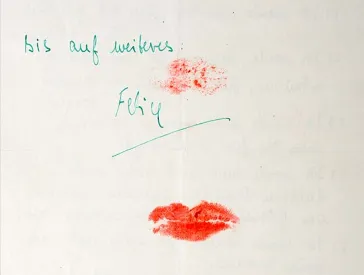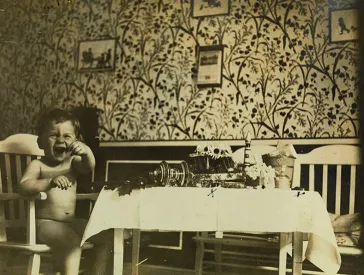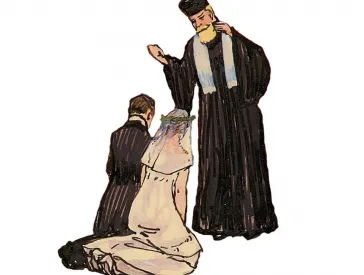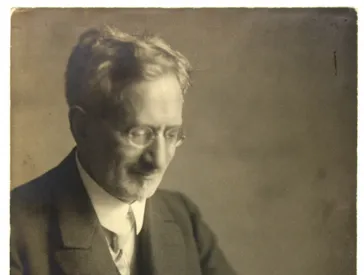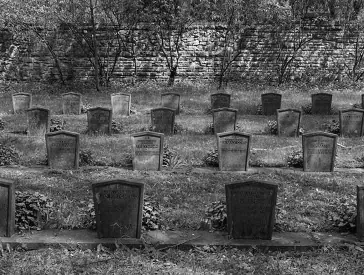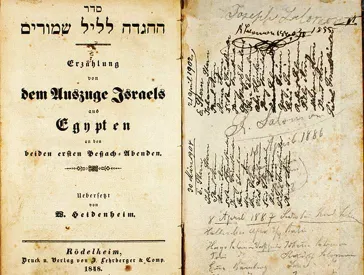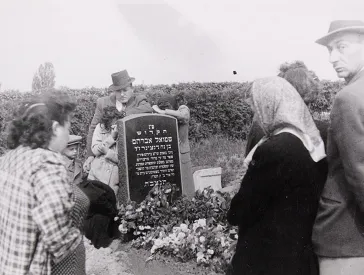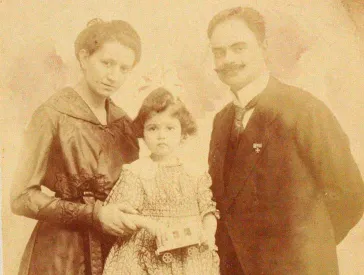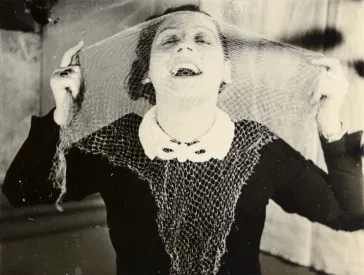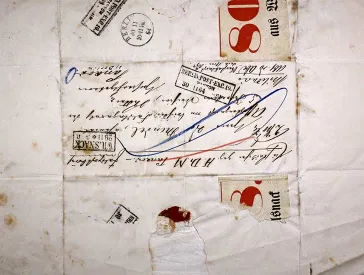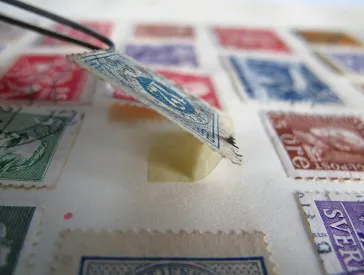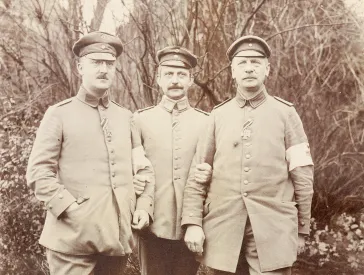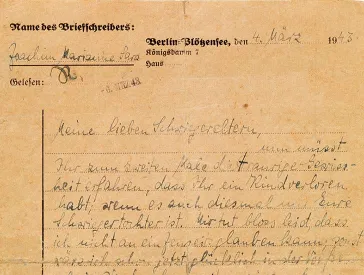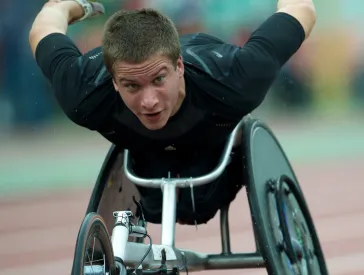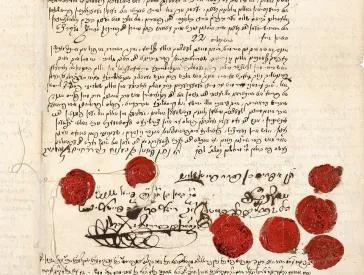
Alles um Liebe
Sexuelle Vielfalt in der Sammlung des Jüdischen Museums Berlin
In der Sammlung des Jüdischen Museums Berlin sind Menschen, die sich heutzutage möglicherweise als LGBTIQ* identifizieren würden, leider wenig sichtbar. Im Schlagwortkatalog der Museumsdatenbank findet sich zwar der Begriff „Homosexualität“, er ist aber kaum vergeben.
Felice Schragenheim und Elisabeth Wust
Die meisten diesbezüglichen Treffer beziehen sich auf die Sammlung zu Felice Schragenheim (1922–1945) und Elisabeth (Lilly) Wust (1913–2006). Ihre Geschichte erlangte Bekanntheit durch das Buch Aimée & Jaguar von Erica Fischer (1994) und Berühmtheit durch den gleichnamigen Spielfilm, der 1999 in den Kinos lief.
Die überlieferten Fotografien und Dokumente belegen die lesbische Liebesbeziehung der beiden, darunter zahlreiche Liebesbriefe, einige davon mit dem Kussmund von Felice verziert. Einzigartig sind die zwei „Eheverträge“, die die beiden Frauen im Juni 1943 miteinander schlossen. Die 21-jährige Felice verfasste den ihren in Form eines Dekalogs mit zehn Versprechen:
„1) Ich werde Dich immer lieben.
2) Ich werde Dich nie allein lassen.
3) Ich werde alles tun, um Dich glücklich zu machen.
4) Ich werde, sowie es die Verhältnisse erlauben, für Dich und die Kinder sorgen.
5) Ich werde nicht dagegen protestieren, dass Du für mich sorgst.
6) Ich werde mich nicht mehr nach hübschen Mädchen umsehen, höchstens um festzustellen, dass Du hübscher bist.
7) Ich werde abends sehr selten spät nach Hause kommen.
8) Ich werde mich bemühen, nachts leise mit den Zähnen zu knirschen.
9) Ich werde Dich immer lieben.
10) Ich werde Dich immer lieben.
Bis auf weiteres.
Felice“
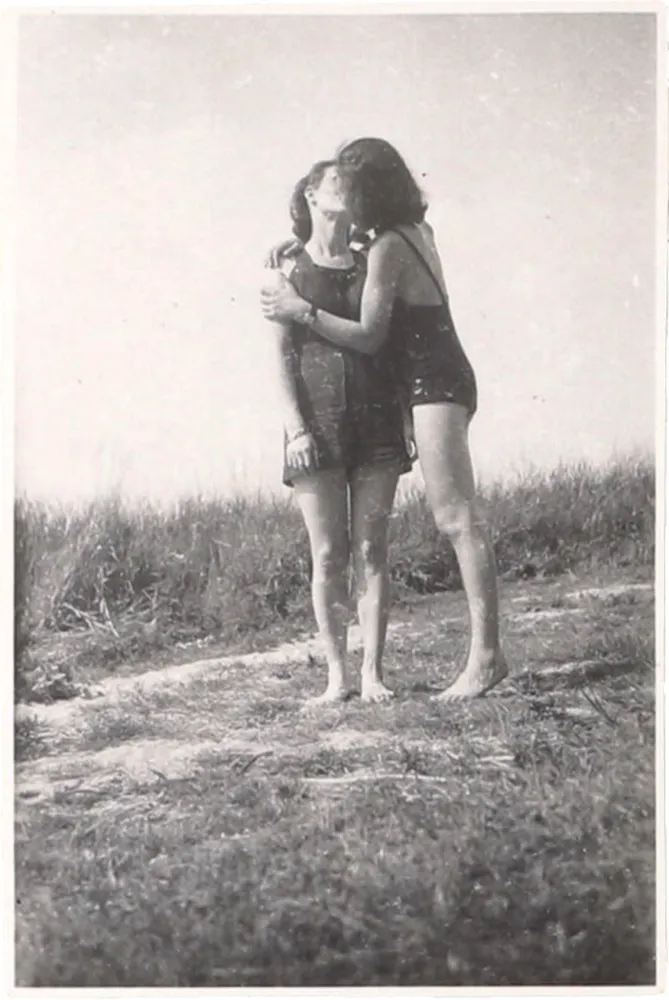 X
X
Felice Schragenheim und Elisabeth Wust beim Ausflug an der Havel, nur Stunden vor Schragenheims Verhaftung, Berlin, 21. August 1944; Jüdisches Museum Berlin, Schenkung von Elisabeth Wust
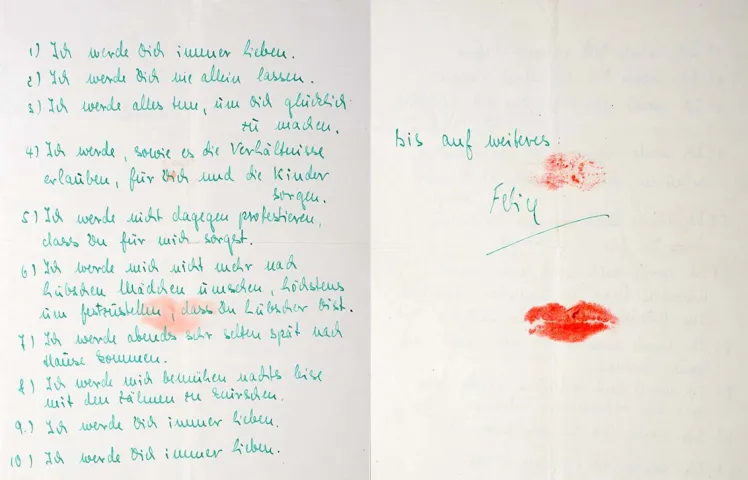
Vorder- und Rückseite des Ehevertrags zwischen Felice Schragenheim und Elisabeth Wust, Berlin, Juni 1943; Jüdisches Museum Berlin, Schenkung von Elisabeth Wust
Die Struktur unserer Museumssammlung
Weitere Schlagworte, die sich auf die sexuelle Orientierung beziehen, sucht man im museumseigenen Thesaurus derzeit vergeblich. „Lesbisch“ oder „schwul“, „queer“ oder „Transsexualität“ existieren nicht als Begriffe. Selbst „Heterosexualität“ taucht als Schlagwort nicht auf, wodurch sie stillschweigend als Norm gesetzt ist. Damit wird letztlich sexuelle Vielfalt ausgeblendet. Sexuelle Identität und Orientierung werden nicht indexiert, mit der Folge, dass externe Nutzer*innen unsere Sammlung auch nicht unter den diesbezüglichen Kategorien durchsuchen können.
Natürlich ist der Thesaurus grundsätzlich erweiterbar, neue Schlagwörter können nach Bedarf ergänzt werden. Im derzeitigen Schlagwortkatalog spiegelt sich aber auch die Tatsache wieder, dass in unserer Sammlung nur wenige Dokumente, Fotografien oder Objekte von (offen bzw. bekanntermaßen) Schwulen, Lesben oder Transgendern enthalten sind. Da sie zahlenmäßig nicht ins Gewicht fallen, schien eine Ausdifferenzierung bislang nicht notwendig.
Dies überrascht nicht, führt man sich die Provenienz unseres Bestandes vor Augen: Das Herzstück besteht aus Hunderten von Familiensammlungen, die uns von Stifter*innen überlassen wurden. Im Mittelpunkt dieser Konvolute, die sich manchmal über mehrere Generationen erstrecken, steht in der Regel ein Ehepaar, zu dem besonders umfangreiches Material überliefert ist. Weitere Dokumente und Fotografien beziehen sich auf gemeinsame Kinder, die Eltern des Ehemanns und der Ehefrau und weitere Familienangehörige. Im Zentrum steht aber eine heterosexuelle Familie, was zur Folge hat, dass z.B. Schwule und Lesben nicht oder kaum repräsentiert sind.
Hinzu kommt, dass die Stifter*innen meist die Kinder oder Enkel sind. Schwule und Lesben haben und hatten aber in der Regel keine eigenen Kinder, sodass ihre Nachlässe auch nicht an nachfolgende Generationen weitergegeben wurden. Wenn Schwule oder Lesben in unseren Familiensammlungen auftauchen, z.B. in Gestalt eines Onkels oder einer Tante, die Zeit seines*ihres Lebens unverheiratet blieb, stehen sie fast nie im Zentrum, sondern sind eher Randfiguren, so wie sie auch eine gesellschaftliche Randgruppe waren. Nähere biografische Informationen liegen nur selten vor, nicht zuletzt, da in vielen Familien die sexuelle Orientierung schlicht tabuisiert wurde.
Über Hubert Landau aus der Sammlung von Paul Hugo Meyer
In der umfangreichen Sammlung von Paul Hugo Meyer, die ich 2012 inventarisierte, finden sich auch einige Dokumente zu seinem Onkel Hubert Landau (1895–1967).
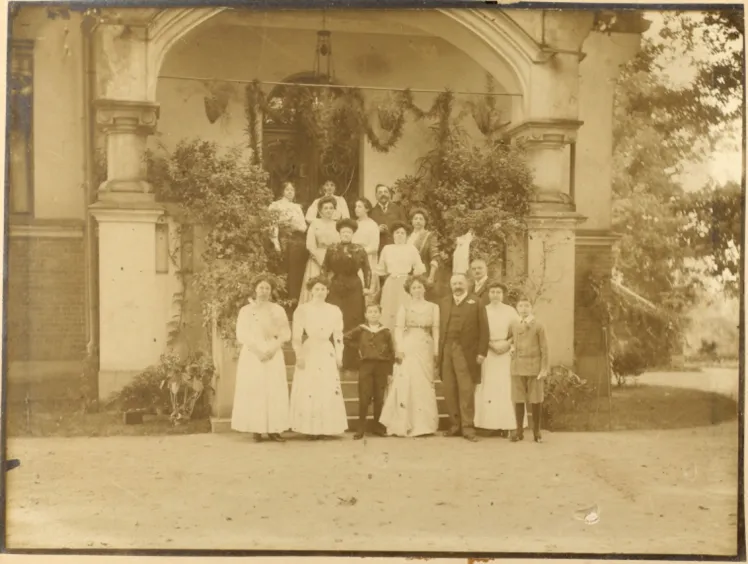
Der 12-jährige Hubert Landau (1. Reihe, 1.v.r.) bei der Silbernen Hochzeit seiner Eltern, Sorau, 1908; Jüdisches Museum Berlin, Schenkung von Judy Deane und Hedy Rudne
Aus den erhaltenen Briefen geht nicht hervor, dass er schwul war, aber der Stifter legte 2003 ein Fotoalbum mit Porträts von Familienmitgliedern an und ergänzte sie mit Kurzbiografien. Über Hubert Landau heißt es:
„As an artist, a homosexual, and a Jew, Hubert recognized the danger presented by Hitler long before other members of the family did.“(Als Künstler, Homosexueller und Jude erkannte er die von Hitler ausgehende Gefahr deutlich früher als andere Familienmitglieder.)
1935 ging der gebürtige Berliner in die USA, wo er bis in die 1950er Jahre blieb:
„He left New York in 1954 after being falsely suspected of a roommate’s murder. He moved to England, spending the remainder of his life with his loving sister Dudie, much to her husband’s dismay.“(Er verließ New York 1954, nachdem er fälschlicherweise verdächtigt wurde, einen Mitbewohner ermordet zu haben. Er ließ sich in England nieder und verbrachte seine letzten Lebensjahre bei seiner geliebten Schwester Dudie, sehr zum Leidwesen ihres Ehemannes.)
Weitere Originaldokumente sind zu seinem Leben leider nicht erhalten.
Der Arzt und Sexualwissenschaftler Felix Abraham
Ein Jahr später inventarisierte ich die Sammlung der Familien Marx und Abraham, die uns 2013 gestiftet worden war. Auch hier stieß ich unter Tausenden von Unterlagen völlig unerwartet auf einige Dokumente und eine Fotografie zu dem Arzt und Sexualwissenschaftler Felix Abraham (1901–1937).
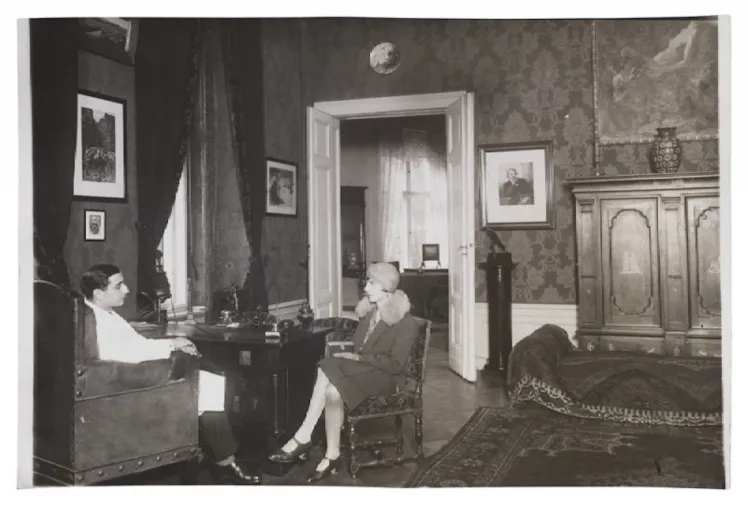
Felix Abraham mit einer unbekannten Frau im Institut für Sexualwissenschaft, Berlin, ca. 1929–1932; Jüdisches Museum Berlin, Schenkung von Geoffrey Marx
Da wir wissen, dass er operative Geschlechtsangleichungen bei Transsexuellen durchführte, nehme ich an, dass die unbekannte Frau eine Transfrau ist, die er berät. Über die sexuelle Orientierung von Felix Abraham, der sich 1937 im italienischen Exil das Leben nahm, erlaubt die Sammlung jedoch keine Auskunft.
Spurensuche im Archiv
Dass mir nur diese (und noch ein paar weitere) Beispiele von LGBTIQ*-Menschen in unserer Museumssammlung bekannt sind, bedeutet nicht, dass sie die Einzigen wären; denn der Eine oder die Andere war wohl weder zu Lebzeiten noch danach geoutet, um diesen modernen Begriff zu verwenden. Verantwortlich hierfür sind – nicht nur in der Zeit des Nationalsozialismus – vor allem die Praxis der Kriminalisierung und Pathologisierung, aber auch die gesellschaftliche Ächtung. Über sexuelle Orientierung und Geschlechtsidentität schweigen sich die überlieferten Dokumente also meist aus. Häufig fehlen persönliche Selbstzeugnisse wie Tagebücher oder Briefe, die Einblicke in (geheimgehaltene) Gedanken und Gefühle oder Erlebnisse geben könnten.
Als Archivmitarbeiter, der selbst schwul ist, richte ich eines meiner Augenmerke gerne darauf, Homosexuelle zu identifizieren. Dabei weiß ich natürlich, dass mein „Gaydar“
sehr subjektiv ist und meine Wahrnehmung mich täuschen kann. Wie sich die Menschen selbst definierten, lässt sich damit ohnehin nicht beantworten. Häufig habe ich Dokumente und Fotografien aus neuen Sammlungen vor mir, bei denen unklar ist, welche sexuelle Orientierung oder Geschlechtsidentität die betreffenden Personen hatten.
Kurt Friedmann und Klaus Oliven
Erst vor wenigen Tagen hatte ich einen solchen Fall auf meinem Tisch: Ich inventarisiere gerade eine umfangreiche Sammlung, die wir 2016 aus Brasilien erhielten. Dazu gehört ein wunderschönes Büchlein von 1938 mit dem Titel Alles um Liebe (Goethe).
Es enthält Gedichte, Zitate und philosophische Gedanken rund um das titelgebende Thema und wurde vom damals 18-jährigen Kurt Friedmann (1919–verschollen) liebevoll illustriert. Er widmete es seinem zwei Jahre älteren Freund Klaus Oliven (1918–2010). Die beiden kannten sich aus der jüdischen Jugendbewegung in Frankfurt am Main und waren „Chawerim“.
„5 Arten von Beziehungen der Menschen“
gebe es, schreibt Kurt im ersten Text: „Das Kennen, die Bekanntschaft (Flirt), die Kameradschaft, die Freundschaft und die Liebe.“
Meine Neugierde war geweckt und ich achtete bei der weiteren Erschließung auf Hinweise zur „Art der Beziehung“ der beiden.
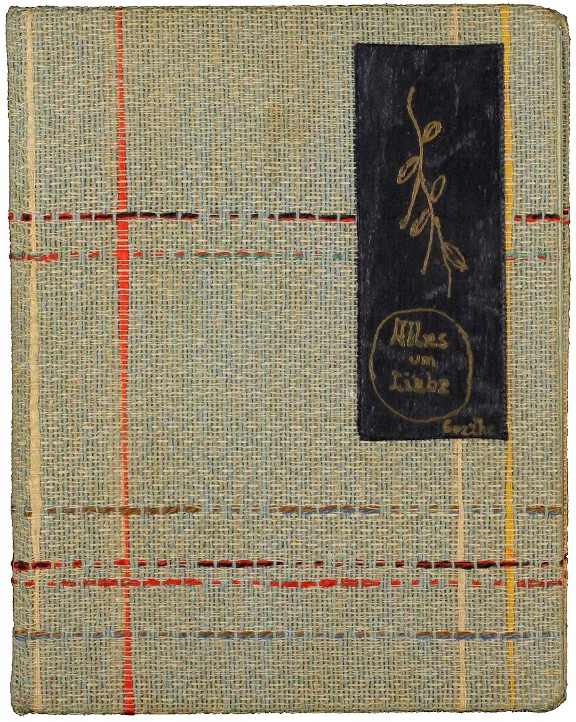 X
X
Gedichtband Alles um Liebe von Kurt Friedmann für Klaus Oliven, Frankfurt am Main, 1938; Jüdisches Museum Berlin, Schenkung von Familie Oliven
Klaus, der in seinen Tagebüchern seine Liebesbeziehungen zu Frauen erwähnt, schreibt über Kurt:
„Ein hübscher Junge, ganz blond […]. Ein ganz eigenartiger, merkwürdiger Junge.“
Und weiter:
„Er war ein Junge, der sehr auf Mädchen wirken konnte. Er hatte etwas sehr Suggestives und Interessantes an sich.“
Zweifelsohne verband die beiden jungen Männer eine besondere Beziehung und sie vertrauten sich vieles an:
„Mit Kurt unterhielt ich mich auch über sexuelle Moral. Er machte eine Trennung zwischen Liebe und Sexus. Er meinte, jeder Mensch brauche die sexuelle Befriedigung.“
80 Jahre später halte ich das Büchlein in Händen und auch auf mich wirkt Kurt Friedmann noch immer interessant. Ich hoffe, weitere biografische Informationen zu ihm und seinem späteren Leben zu finden. Vielleicht wird es trotzdem Kurts Geheimnis bleiben, was er für Klaus empfand. Und vielleicht ist das auch gut so.
Jörg Waßmer, Archiv, schrieb den Text im Juli 2018 zum 40. Christopher Street Day auf Berlins Straßen. Wie jedes Jahr ging es bei der Demonstration um die Rechte von Schwulen und Lesben, Bisexuellen und Transgendern. Dabei lautete das Motto „Mein Körper – meine Identität – mein Leben!“ Und wie immer ging es auch darum, sexuelle Vielfalt öffentlich zu leben und zu feiern. Seine weitere Spurensuche nach Kurt Friedmann hat Jörg Waßmer in einem Online-Feature dokumentiert.
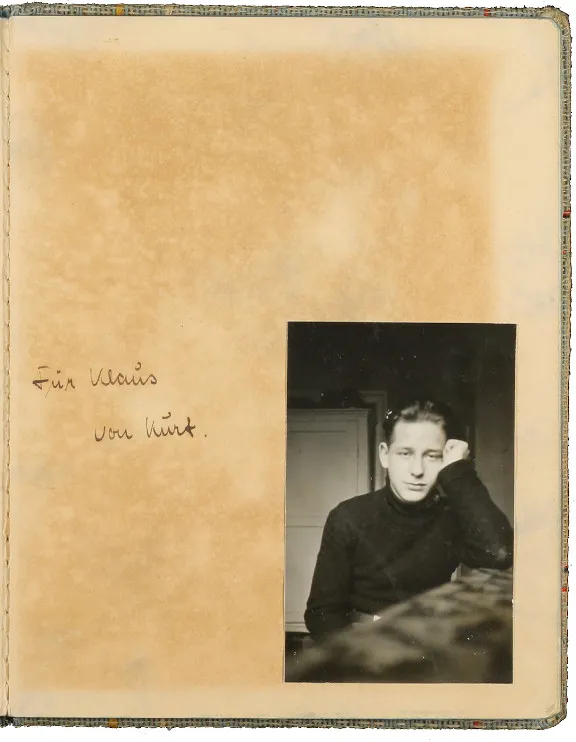 X
X
Widmung „Für Klaus von Kurt“
im Gedichtband Alles um Liebe von Kurt Friedmann für Klaus Oliven, Frankfurt am Main, 1938; Jüdisches Museum Berlin, Schenkung von Familie Oliven
Zitierempfehlung:
Jörg Waßmer (2018), Alles um Liebe. Sexuelle Vielfalt in der Sammlung des Jüdischen Museums Berlin.
URL: www.jmberlin.de/node/7603
Blick hinter die Kulissen: Anekdoten und spannende Funde bei der Arbeit mit unseren Sammlungen (22)
